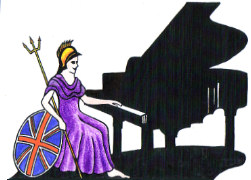Teachers, Accompanists and Piano Entertainers in the UK

UK Piano Page

Unit 60 The Triangle
Wolverton Park
Milton Keynes, Buckinghamshire MK125FJ
England
We are a family run music shop in Wolverton,
121-125 Royal Avenue
Belfast, County Antrim BT1 1FF
Northern Ireland
The Belfast music scene has been quietly turning
152 Market Street
Dalton-in-Furness, Cumbria LA15 8RQ
England
40 Irongate
Derby, Derbyshire DE1 3GA
England
Charles Foulds opened the first Foulds shop in
154 Sidwell Street
Exeter, Devon EX4 6RT
England
Founded in April 2007 and following on from the
Music Festival for performers and guests Our 10th
18-06-2022 01:30PM
The Morecambe Bay Piano Group was set up to extend
11-12-2021 02:00PM
The Morecambe Bay Piano Group was set up to extend
08-01-2022 02:00PM
The Morecambe Bay Piano Group was set up to extend
12-02-2022 02:00PM
Polyester and Pianos.
Polyester began as a group of polymers in W.H. Carothers' laboratory. Carothers was working for DuPont at the time when he discovered that alcohols and carboxyl acids could be successfully combined to form fibres.
Polyester as a polish is a three-component paint that utilizes the resin, catalyst and accelerant. Thanks to its tight molecular structure, polyester has a solid content which gives the product superior mechanical and chemical resistance to scratches
The application of Polyester finishes requires specialized equipment and machinery to produce a quality product. Polyester is specified when high scratch resistance and 100% sheen are needed.
Cleaning Polyester on Pianos
For everyday cleaning, wipe your piano with a clean, damp (not wet) cloth, followed by a clean dry cloth. If more stubborn soils do get on the finish, you may try dipping your cloth in a mild soap and water solution before wiping, and then follow that with a cloth dampened in clear water, and then the dry cloth.